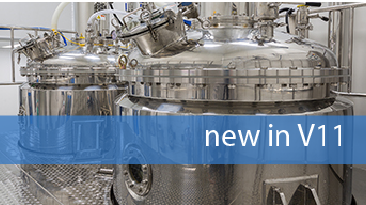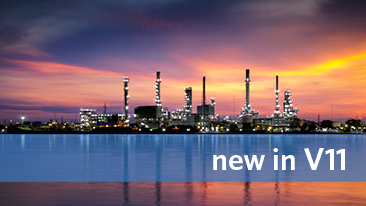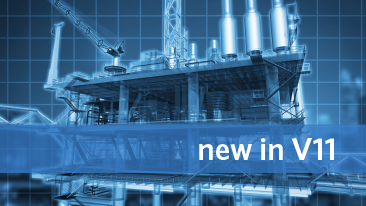A couple weeks ago, at Newark Airport, I ran into a plant startup expert who was on her way to Jakarta to help start up a client’s plant and train some new operating staff. As we were talking, she pointed out that there’s a gap in the middle of the experience distribution of the current workforce. There are few younger workers around who can do her work. Her 35 years of experience makes her the youngest on her team!
This is an industry-wide problem, and it is one area where AspenTech is applying technology to enable the future.
For her clients, the plant digital twin, together with dynamic optimization, will provide fast access and bring together multiple types of operating information. This will enable plant operators to better monitor and understand the dynamics of what’s happening in the process units they are supposed to drive to peak performance, as well as make adjustments in operating settings. And it will dramatically speed up the learning curve.
A Strategic Direction
I recently talked through AspenTech’s digital reference architecture for energy and chemicals with a key executive at a leading performance chemicals enterprise in Europe. He confirmed that the architecture and AspenTech’s vision for digital transformation is aligned with where they envision heading in their use of software for margin optimization.
“Not only are we pushing an increased flow of actionable data and information between functional silos for better decision-making, but the way we are re-defining work in operations is also changing,” he said. “What we are finding is that a knowledge worker’s daily tasks increasingly are involving use of multiple software tools to make a decision or get operational insight. It’s important to give those workers seamless and intuitive access to the different data and tools that they need as our chemical plants pursue operational excellence.”
For his organization, the integration between plant engineering roles and operations will better enable them to work in the new collaborative, cross-functional way that they want. They believe that will be key to driving operational excellence as a competitive advantage for them.
AspenTech Digital Reference Architecture
In the refining and chemical plant setting, vertical integration is the “holy grail” of eliminating margin leakage, while asset lifecycle integration (horizontal integration) is key to increasing plant operational integrity and reliability. These two together intersect the value chain, which connects the asset to raw materials supply and to customers. All three are at the heart of a new AspenTech digital reference architecture that provides a blueprint for moving to the smart enterprise of the future.
Along this journey, AspenTech has an ambitious plan to continue evolving this end-to-end vision with many innovations that will drive operational excellence. The graphic below shows the reference architecture.
The common theme running through this architecture is the convergence of previously separate technologies. In a refinery, there is the world of the planner, the frenetic world of the scheduler, the highly technical world of the plant optimization expert and the troubleshooting world of the plant engineer. As each world is dramatically supercharged with faster and better models, advanced analytics and AI, companies are expecting to be able to substitute smart technology for years of operating and engineering experience.
aspenONE® V11 Advances This Architecture
Just introduced to market, aspenONE V11 is an important signpost in this journey. V11 continues to advance the integration between the arenas of vertical integration and asset lifecycle integration. It breaks new ground in the integration across these digital technology areas.
Here are a few of the innovations we’ve added in V11 that we expect companies to adopt most quickly and get the most rapid benefit from.
The Plant Digital Twin: New enabling capabilities simplify the deployment of a simulation model as an online or offline digital twin of a section of plant. This greatly reduces the level of expertise needed to attach plant data streams to a digital twin model, and additionally improves the ability to run higher-fidelity models faster in a virtual-model monitoring mode. (By the way, we have an exciting example of this: a refinery sulfur-recovery digital twin, being presented at the upcoming OPTIMIZE 2019 conference in Houston, Texas.)
Planning Model Accuracy: Building on the power of these digital twin models, we’ve introduced a breakthrough level of automation into the planning (LP) model update workflow. It’s been proven by several customers that by driving collaboration between engineering services teams and planning teams, this workflow increases margins by $.10-$.20 per barrel and enables staff to perform these updates much more frequently with fewer people involved.
Dynamic Optimization: The introduction of a new dynamic optimization tool, AspenGDOT™, provides a key integration point that enables the autonomous ability to take plant data streams, dynamically identify optimization strategies and autonomously update the advanced control settings on key operating units. The benefits here include greater operating margins, as well as improvements in key sustainability areas such as energy use and emissions.
These three innovation areas provide a proof point that this reference architecture will bring margin optimization benefits to hydrocarbon asset operators. It will help drive collaboration between functions. It will change the way that organizations can envision and realize the smart enterprise. And it’s available today with aspenONE V11. Learn more here.






Leave A Comment